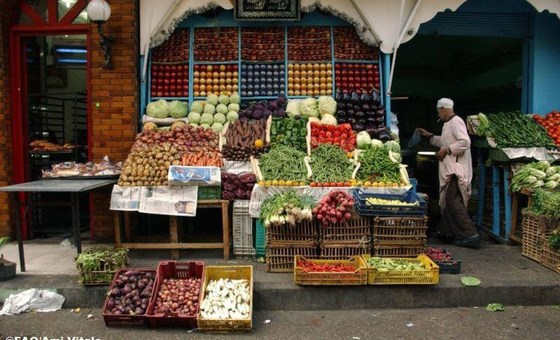The global cost of food imports will reach $1.94 trillion by 2022, higher than previously expected, according to a new Food Outlook report released by the Food and Agriculture Organization of the United Nations. .
The new forecast would mark an all-time high and an increase of 10% from the previous record set in 2021, although the pace of growth is expected to slow in response to rising global food prices and currency depreciation against the American dollar.
The agency highlights that both factors weigh on the purchasing power of importing countries and, consequently, on the volumes of imported food.
Food in low-income countries at risk
Most of the increase in the import bill corresponds to high-income countries, mainly due to higher prices, although their volume is also expected to increase. But, the rise in prices affects economically vulnerable groups of countries more.
As an example, the total food import bill for low-income countries as a whole is projected to remain roughly unchanged, although it is expected to decrease by 10% in terms of volume, which points to a growing problem of access to food for these countries.
“These signs are alarming from a food safety point of viewsince they indicate that importers are experiencing difficulties in paying for the increase in international prices, which could herald the end of their ability to resist the rise in international prices,” warns the report of the Directorate of Markets and Commerce of the FAO.
The report warns about a possible widening of existing differences and inequalityas high-income countries continue to import the full range of food products, while developing regions increasingly focus on staple foods.
In this context, the Organization welcomed the approval by the International Monetary Fund of a “Food Shock Window”, which will be available for one year to provide greater access to emergency financing for countries facing urgent food needs. balance of payments related to the world food crisis.
The study also forecasts that the global bill for imports of inputs, including fertilizers, will increase to 424,000 million dollars in 2022, 48% more than the previous year and up to 112% more than in 2020.
The increase in energy costs and imported fertilizers are responsible for this forecast.
Food trends by products
The report predicts that world wheat production reaches record 784 million tons during the 2022/23 seasondriven by the important recovery of crops in Canada and Russia.
This circumstance should push world wheat inventories to record levels, although the analysis details that the accumulations would take place mainly in China and Russia, while in the rest of the world it is estimated that the levels of inventories will fall by 8%.
It is forecast that coarse grain stocks will fall to their lowest levels since 2013due to the reduction of reserves in the main countries as a result of lower production.
Thus, world production of coarse grains would fall by 2.8% in 2022, to 1,467 million tons. Although with a probable decrease during the 2022/23 period, world rice production would be maintained.
Global oilseed production would recover and it would reach an all-time high in the 2022/23 campaign, as the increase in soybean and rapeseed production is expected to offset a likely decline in sunflower seed production.
Global sugar production is also forecast to risedriven by a significant recovery in production in Brazil and larger harvests in China and Thailand, although consumption will grow at a slower pace.
World production of meat and dairy products will increase slightly in 2022, while that of fisheries and aquaculture will increase by 1.2%, with a 2.6% increase in aquaculture more than offsetting the slight drop in capture fisheries production.









![[Img #74683]](https://thelatestnews.world/wp-content/uploads/2024/12/The-main-mistakes-to-avoid-when-betting-on-electronic-sports-150x150.jpg)





